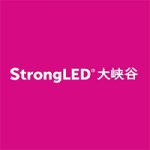Table of Contents Hide
What is an LED pixel bar
An LED pixel bar is a linear addressable LED system that can create dynamic and intricate color patterns across the entire run. The term "pixel" refers to an individually addressable LED package or module. Each pixel can be controlled independently. Multiple LED pixels can be programmed to work together in a coordinated manner, allowing for the creation of synchronized lighting effects across the entire LED bar. Multiple LED pixel bars may be interconnected and work together to form a cohesive lighting installation. Integration with media servers, audio systems, building automation network, and advanced control solutions can create interactive and immersive multimedia experiences in a wide range of applications.Applications
The ability to control each LED independently enables a vast array of dynamic and pixelated lighting effects. LED pixel bars excel at creating smooth and seamless color transitions, allowing for fluid and captivating color changes that enhance the visual impact of your lighting design. Synchronizing multiple LED pixel bars allows you to create large-scale lighting displays with coordinated animations and effects. LED pixel bars find applications in various lighting scenarios, in particular for applications where dynamic and programmable lighting effects are desired.- LED pixel bars are often used in architectural lighting to highlight and accentuate the features of buildings, bridges, and other structures.
- Media facades, the large-scale LED displays adorning buildings, often use LED pixel bars to create dynamic and attention-grabbing digital signage.
- In the entertainment industry, LED pixel bars are widely used for stage lighting and productions for creating captivating visual effects.
- LED pixel bars are employed in various events and venues, including concerts, festivals, weddings, and conferences.
- The dynamic and customizable nature of LED pixel bars makes them popular in nightclub and bar environments. They can be programmed to match the music, create vibrant atmospheres, and enhance the overall experience for patrons.
- In retail settings, LED pixel bars are used to draw attention to product displays, create engaging window displays, and establish a dynamic and inviting shopping environment.
- The programmable nature of these fixtures allows artists and designers to create dynamic and interactive artworks that respond to environmental stimuli or user input.
- Theme parks, amusement parks, and other themed attractions utilize LED pixel bars to enhance the visual experience of rides, attractions, and themed areas.
Construction of LED pixel bars
The construction of an LED pixel bar begins with a printed circuit board (PCB) onto which the individually addressable LEDs are mounted. The rigid or flexible PCB includes traces for the signal lines that carry the control commands or data signals from the microcontroller or controller to the LEDs, and facilitate the serial communication of data between LED packages/modules, allowing for synchronization and control of multiple LEDs in sequence. The LEDs packages/modules are arranged in a single row or multiple rows, depending on the desired pixel density and effect. To protect the LEDs and electronic components, the linear LED assembly is typically enclosed in a protective housing or casing which may be made of plastic, silicone, or other materials that provide durability and resistance to environmental factors. LED pixel bars come in various form factors, such as bars, tubes, or flexible ropes. The form factor is chosen based on the intended application and design requirements.Individually addressable LEDs
The pixel node can be an integrated LED package or an LED module. The integrated LED package is similar to conventional analog LEDs in form but additionally include an LED driver. The on-board LED driver provides the necessary power regulation for LEDs and includes control circuitry to interpret input signals and adjust the light output. An LED module uses analog LED packages as the light source. The driver and control circuitry is mounted alongside.The pixel node can be monochrome (single color, usually white, red, green, or blue) or RGB (red, green, blue) and other multi-channel variants in color configuration. Each component LED has a unique identifier or address assigned to it. This address is used to distinguish one LED from another in the array so that the controller can individually address and control each component LED in the pixel bar.
In RGB LEDs, mixing the three primary colors in varying intensities can create an infinite color spectrum. To provide a broader color gamut or better color qualities additional color channels are added such as amber (RGBA) or white (RGBW). Individually addressable LEDs can produce accurate color and brightness with pulse width modulation (PWM) dimming of the individual component LEDs.
LED controller
LED pixel bars require a microcontroller or a dedicated LED controller to interpret input signals, process data, and transmit instructions to the LEDs. It coordinates the behavior of addressable LEDs across the pixel bar as well as all fixtures within a lighting installation to create dynamic and visually engaging displays. The controller is programmable, enabling users to create lighting sequences, animations, and effects. LED pixel bars support pixel mapping, allowing the controller to assign specific colors or effects to individual pixels along the length of the bar. Together with the feature-rich and flexible control software, even very advanced lighting scenarios and complex translation of video content can be realized on LED matrix systems.The selection of a controller is a critical aspect of designing LED pixel bars, and it depends on the complexity of the animations, control protocol compatibility, scalability, real-time capabilities, and integration. Microcontrollers such as Arduino and Raspberry Pi can be used as controllers for smaller or DIY installations. FPGAs (field-programmable gate arrays) are suitable for scenarios where real-time processing and complex animations are crucial. Graphics processing units (GPUs) can be leveraged for graphics-intensive LED animations. Smart lighting controllers that work on IoT (Internet of Things) platforms may be used in media facade applications.





































